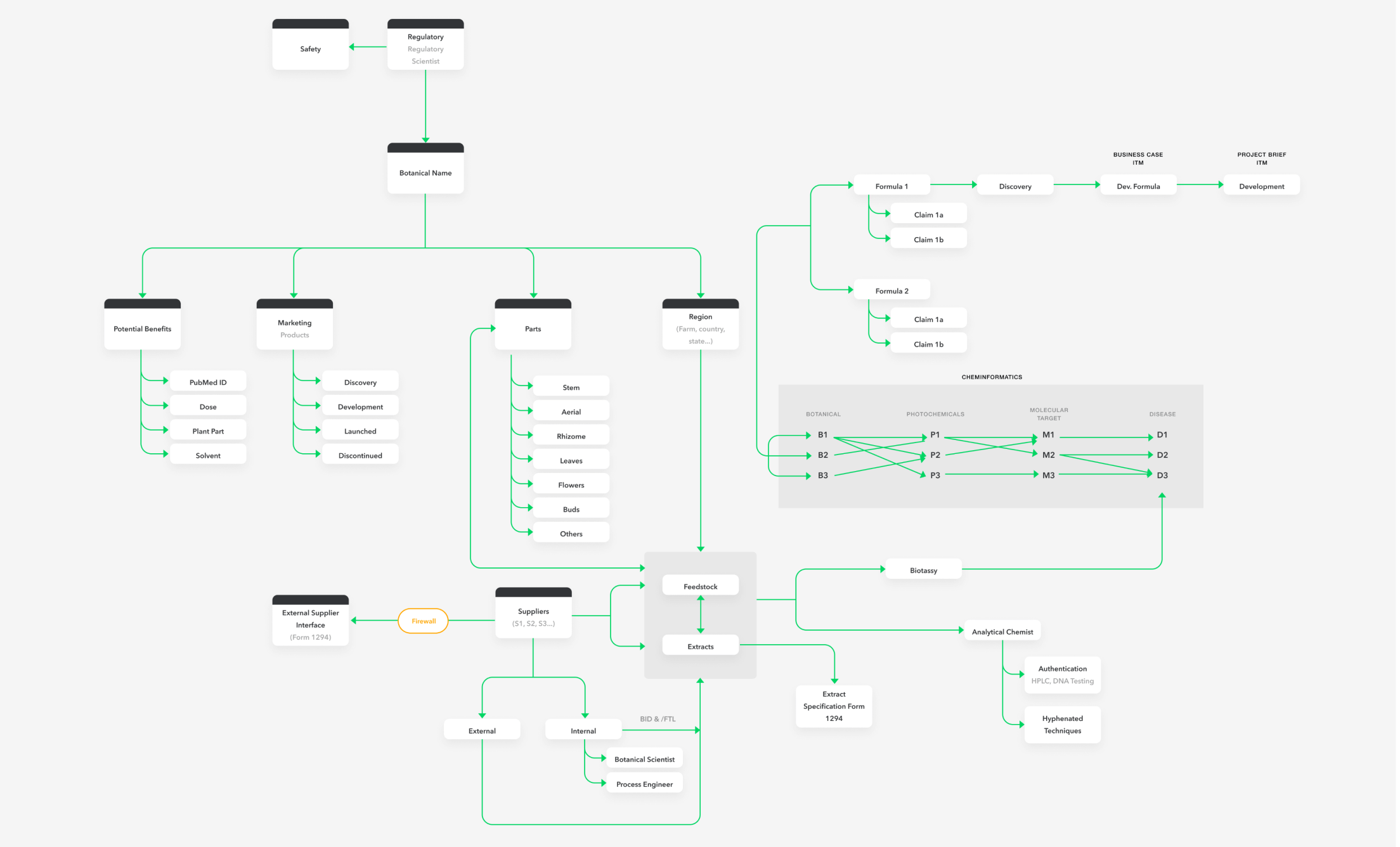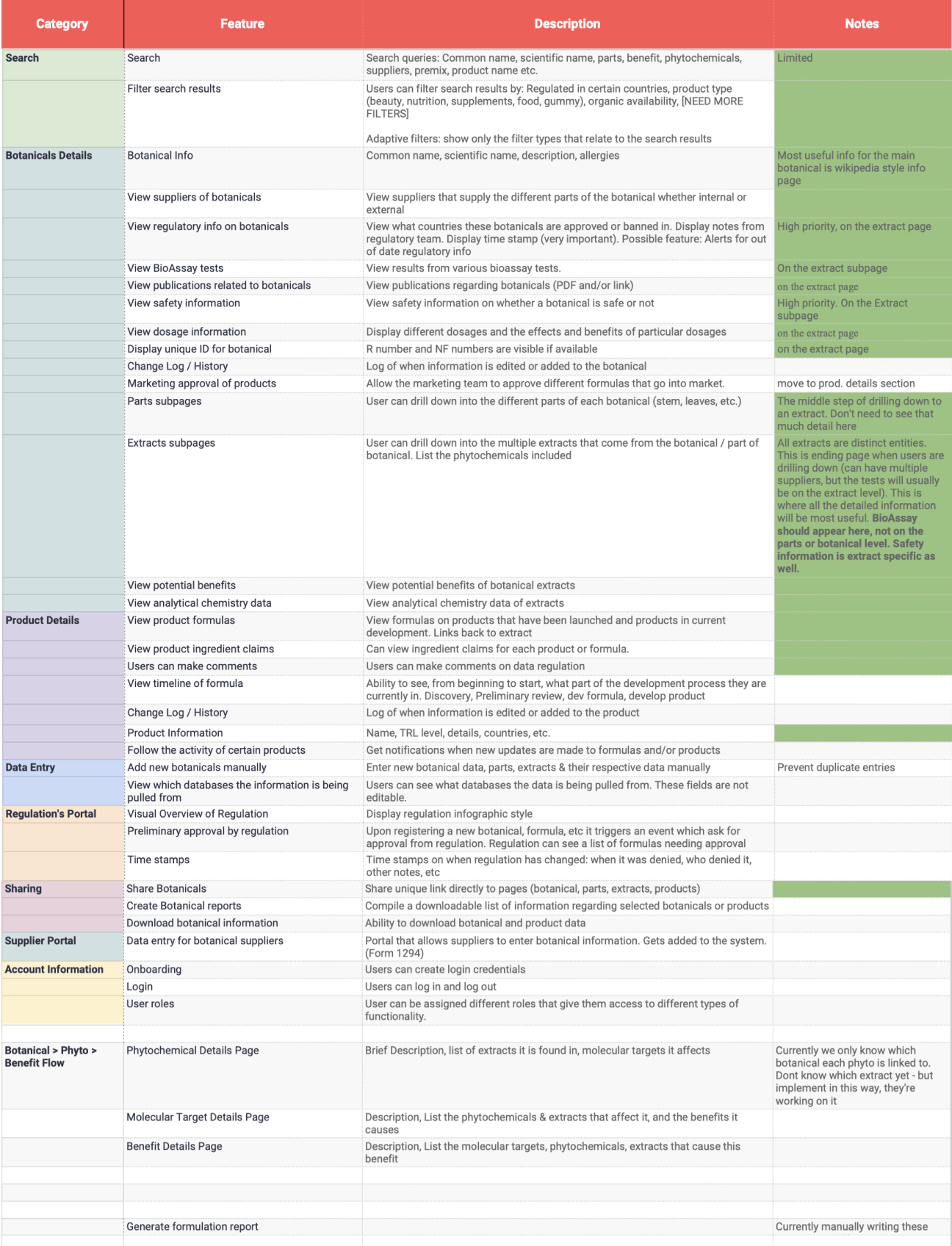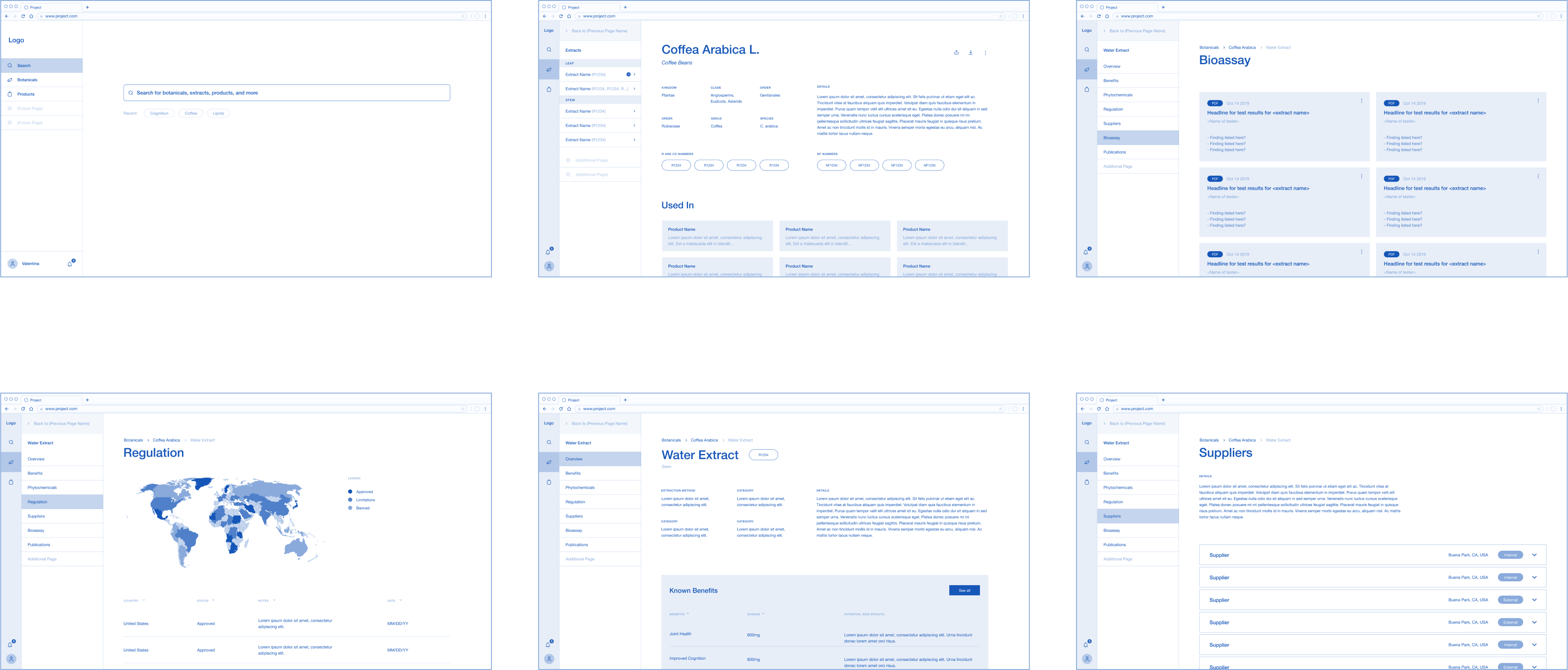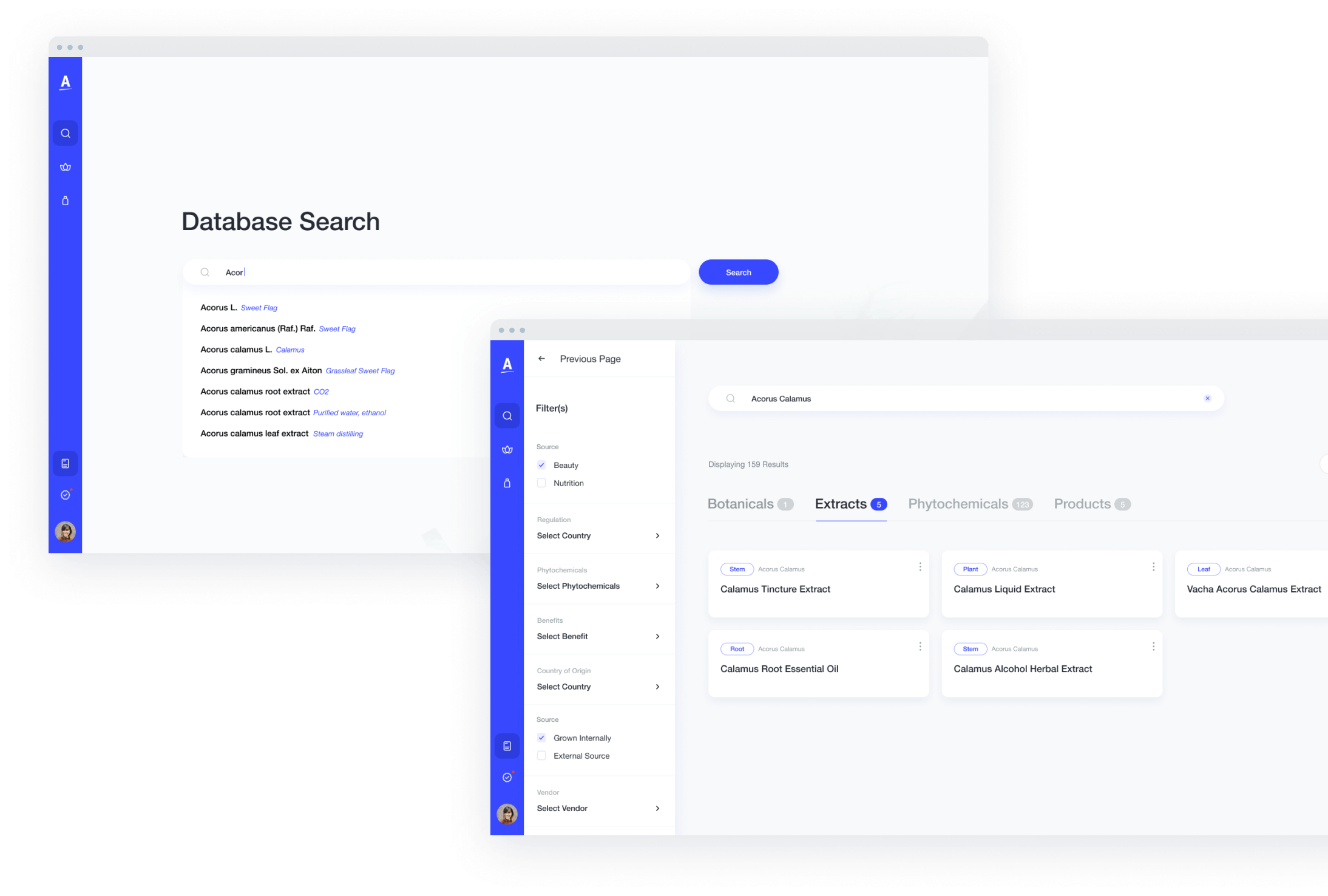
Vinson Gotingco - Design lead, research, UX/UI, strategy
Cameron Sagey - Research, UX support
Turkka Mannila - Development lead
Viet Le - Development
This version would be used to convince higher level executives to approve a budget that would finance an MVP version. If approved, this would be used by thousands of Amway employees. No pressure.
This lack of system communication led to users having to input duplicate entries across different databases. This was time consuming and inefficient. This project aimed to provide their users with a “one stop shop” for all their botanical needs.
A botanical is a plant or plant part valued for its medicinal or therapeutic properties. These are used as ingredient’s for Amway’s beauty and nutritional products. Since this is an internal system, the Amway team was both the client and the user. Amway has six main teams involved with product development. Before taking a look at any of their current systems, we interviewed each team to understand their daily responsibilities.

A botanical is a plant or plant part valued for its medicinal or therapeutic properties. These are used as ingredient’s for Amway’s beauty and nutritional products. Since this is an internal system, the Amway team was both the client and the user. Amway has six main teams involved with product development. Before taking a look at any of their current systems, we interviewed each team to understand their daily responsibilities.


We workshopped with the Amway team to create a list of features. Due to the many teams needed to be satisfied, there was little room to cut out features.
This features list became our “source of truth”, for the database, helping reduce scope creep. Considering that botanicals was the common starting point among majority of the user journeys, it wasn’t a surprise that it was the category with the most features.

Since this is a business facing web application, we needed to make sure that the UX was on point. Considering that we were working with scientists, we focused on creating high-fidelity wireframes to simulate real data and help Amway team better visualize the product.
We used our card sorting categories to tackle each use case individually. We cross-referenced with the Amway team to ensure accuracy before moving on to the next use case.

Considering the massive amount of data hosted in this database, we wanted to avoid users getting lost in heavily nested content. This fixed navigation bar serves as an anchor point for our users. The nav bar dynamically changes, allowing users to always know where they are, as users go deeper within the database.
Even though this is a web-based application, adding a native back button helps guide users from getting lost in the content.

Through our research, we saw that botanicals, extracts, phytochemicals, and products were respectively the four most common/sought after starting points for many use cases. Upon search, this feature clearly displays the query’s relation to these four categories.
The Amway team wanted search functionality to be “similar to that of Google.” We understood that is an impossible task, considering the budget we had. However, we wanted to at least design and develop the feature to be future proof for future iterations.

The system was approved for the MVP phase! However, due to the lack of access from certain systems, we weren’t able to successfully consolidate all the systems. However, according to the Amway team, we successfully consolidated three, making this database the start of their new “source of truth”. Full consolidation across all systems was discussed to be completed in future iterations.
Set up an introductory call with all product dev stakeholders. We were in consistent contact with three main product development members. However, when interviews were set up with other stakeholders, many were not well informed on the purpose and goal of the database. This created initial skepticism from the stakeholders, as they felt that the task at hand was not feasible.
Design the product to be more future proof. We were not provided access to certain data until we were already further along the UI phase. Due to this, we did not anticipate certain data entries to be as long as they were. This created some issues, especially for pages with data tables.
This project was tough. I had no idea what phytochemicals or botanicals were. However, it was great to hear that the Amway team was impressed with our desire to fully understand the problem space.
Considering that this concept was approved for an MVP phase, it’s a huge win. It’s fulfilling to know that this database has the potential to improve efficiency for thousands of Amway employees.